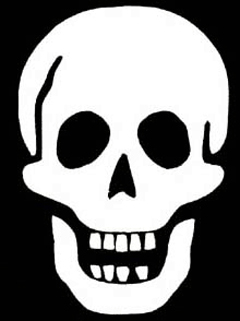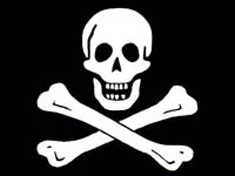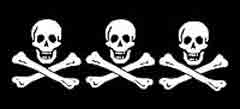You searched for:
“skulls”
1. The bony or cartilaginous framework of the head, or the cranium, of vertebrates which consists of the bones of the brain case and face: The primary bones of the skull are the maxilla (upper jaw), the mandible (lower jaw), the zygomatics (cheek bones), and the two nasal (nose) bones.
2. The head which is regarded as the seat of thought or intelligence: Oliver told his brother to use his head, or skull, and to stop smoking.

2. The head which is regarded as the seat of thought or intelligence: Oliver told his brother to use his head, or skull, and to stop smoking.

Skulls have several functions or uses
- The skull encases and protects the brain, houses organs of special senses, provides points of attachment for muscles of the head and neck, and it helps to form the first parts of the breathing, or respiratory, and digestive tracts.
- Many of the bones are hollow, thus reducing the weight of the skull and adding to the sound of the voice.
- All of the bones of the skull, except the mandible, are fixed to each other by immovable joints known as sutures.
There are several cavities in the skull:
- The cranial cavity, where the brain is located.
- The nasal cavity, which is involved with smelling and breathing.
- The orbits, where the eyeballs and their associated muscles exist.
- Part of the mouth is also formed by the skull.
This entry is located in the following unit:
English Words in Action, Group S
(page 7)
A collection of bones of the head considered as a unit, and that enclose the brain and give form to the head and face: The bones of the skull include: the frontal, parietal, occipital, temporal, sphenoid, ethmoid, zygomatic, maxilla, nasal, vomer, palatine, inferior concha, and the mandible.
This entry is located in the following unit:
Computerized Axial Tomography, CAT, or Computed Tomography, CT Terms +
(page 3)
Word Entries containing the term:
“skulls”
A picture of a human skull situated above two crossed bones: This image of a skull and crossbones was used on pirates' flags as a symbol of death; however, it is sometimes currently used as a "warning label" on poisons; so, avoid, or stay away, from anything that uses such pictures!


This information about skulls and crossbones, which is utilizing the pictures, will NOT cause you any harm!


This entry is located in the following unit:
English Words in Action, Group S
(page 7)
